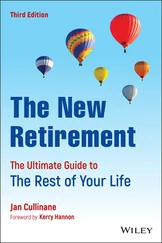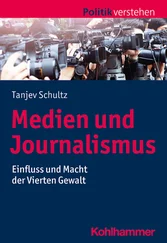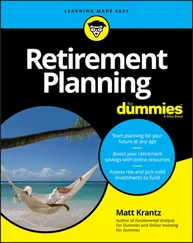They also continue to lobby for a repeal of the contribution limits, currently $16,500 a year for an employee, saying that this would increase retirement savings. It would—for the highly compensated employees who are already saving. Employers would also benefit, because more of a highly paid employee’s savings would be in the 401(k) rather than the unfunded deferred-comp plan.
But how would allowing the highest-paid employees to save more—including those with far more lucrative deferred-compensation plans—improve savings rates for the low-paid? Employers’ answer: By giving executives more of a stake in the small-fry 401(k), they’re more likely to maintain it, not eliminate it altogether.
Not likely. Employers enjoy too many benefits from 401(k) plans.
We saw in Chapter 1 how many 401(k)s were created to enable companies to capture surplus money from pensions they terminated: By setting aside 25 percent of the surplus in a replacement plan, like a 401(k), they could pay only a 20 percent tax on the rest of the money, and keep it.
Companies then began using employee stock ownership plan (ESOP) assets to fund their contributions to 401(k)s, an arrangement called a KSOP. Since the early 1990s, more than a thousand companies, including Marriott, McKesson, Bank of America, Verizon, Sears, McDonald’s, Parker Hannifin, Procter & Gamble, Abbott Labs, and Ford, have quietly adopted this new hybrid structure.
One way this works: An employer that wants to build a factory might borrow $100 million from a bank, use it to buy $100 million of its own shares, and contribute the shares to an ESOP. The ESOP repays the bank, and the employer contributes an equal amount to the ESOP. The employer than taps the shares to contribute to employees’ 401(k) accounts. [21] These are called “leveraged” ESOPs, to distinguish them from ESOPs used by owners of small, privately held companies to buy out the owners’ shares.
By funneling loan money through ESOPs, employers can deduct both the principal and interest on their loan repayments, reducing borrowing costs by as much as 40 percent. KSOPs provide employers with an additional tax break: They can deduct the dividends on the company stock they contribute to 401(k)s, a move worth tens of millions of dollars a year to large companies. KSOPs demonstrate the dual purpose retirement plans often have: They enable employers to get low-cost loans while inexpensively funding their retirement plans.
There’s nothing inherently wrong with a company trying to maximize its tax savings, but it isn’t always a win-win situation for employees. Like the hybrid pensions companies were adopting in the 1990s, these hybrid 401(k)s provide benefits to the employers, sometimes at the expense of employees.
More than 10 percent of the total assets in 401(k)s is invested in employers’ own stock, and at some companies the percentage of employer stock in 401(k)s is even higher, which leaves employees dangerously exposed to the fate of their company and industry. If a money manager put that much of a pension plan’s assets into a single stock, he’d be fired for idiocy and sued for violating fiduciary standards. But retirement savings plans—where the employees bear all the risk—are exempt from “diversification rules” that make it illegal to invest more than 10 percent of a pension plan’s assets in the employer’s own securities. This lack of diversification led to some spectacular debacles, including the $1.2 billion employees at Enron lost when the tech bubble burst.
The miracle of the 401(k) was again put to the test in 2008. During the worst market meltdown since the dawn of 401(k)s, fifty million workers lost a total of at least $1 trillion in their 401(k)s when the market cratered in 2008.
Jacqueline D’Andrea, of Henderson, Nevada, was among them. She lost more than 60 percent of the 401(k) savings she’d built over a decade as a manager at Wal-Mart. Her account had grown to almost $20,000 by the beginning of 2008. By the end of the year it had fallen to $6,000. When she lost her job in May 2009, D’Andrea, forty-eight, cashed out her account to pay for living expenses until her unemployment check kicked in. She’s learned her lesson, she says: If she ever has a job again that offers a 401(k), she’ll steer clear. “It’s too risky,” she says. Other Wal-Mart employees did better, but, overall, the 1.2 million employees in the retailer’s 401(k) retirement plan lost 18 percent as the market plunged. Even the employee discount isn’t going to make up for that.
The outcome was different in the corner office. Chief executive H. Lee Scott Jr.’s supplemental retirement savings plan had a guaranteed return of 6.6 percent, which added $2.3 million to his account during the investment storm, bringing the total to $46.7 million.
Employees are expected to bear all the investment risk in their 401(k)s, but when it comes to the executive equivalent of 401(k)s, their deferred-comp plans, that isn’t always the case. The same year that employees were losing upward of 40 percent of their savings, one-quarter of top executives at major U.S. companies had gains in their supplemental executive retirement savings plans that year, thanks to the guaranteed returns many receive.
Comcast, the giant cable operator, provides top executives with a guaranteed 12 percent return on their supplemental savings. This produced $7.4 million in gains for executive vice president Stephen Burke in 2008, boosting his deferred-compensation account to $71 million. The 72,000 Comcast workers lost 28 percent of their savings, a total of $649 million. The average account size by the end of the year: $24,000.
“When the market went down, executives in fixed plans were happier than hogs,” said a benefits consultant in Sacramento who works with employers.
One would think that at the other 75 percent of companies, which don’t offer guaranteed returns for top management, the executives would face the same risk as the employees. Typically, they’re given investment selections that mirror the mutual funds available in the employee 401(k) plans.
But they don’t necessarily face the same risk. Even when given the same investment selections as employees, some executives managed to pick only winning funds.
Don Blankenship, CEO of Massey Energy, the controversial coal company, could have elected to allocate his supplemental savings among eight investment options, including small capitalization, international, and index mutual funds. Most of these funds were down 40 percent or more in 2008. But Blankenship’s account had earnings of $909,939 that year because he apparently allocated his $27 million in savings to the only fund among the eight that had a positive return, Invesco Stable Value Trust, which was up 3.4 percent. Massey employees, who had the same fund selections as the executives, lost a total of $44 million, or 25 percent of their savings.
Top officers at Cummins Inc. also had a choice of investment options: the return on the S&P 500 Index, the Lehman Aggregate Bond Index, or 10-Year Treasury Bill + 2%. All the top executives selected only winning investment options, and had a total of $1.4 million in gains on their accounts. Meanwhile, the employees of the Indiana-based engine maker lost 12 percent on their 401(k) retirement accounts. A spokesman had an explanation for this investment success: “These are more senior people who can be expected to make more conservative investment choices than a 25 year-old in the 401(k).”
Employees who saw their retirement savings slaughtered then had another setback: Hundreds of companies stopped contributing to the 401(k) accounts at all. United Parcel Service was one of the larger ones: It suspended contribution to its 60,000 employees’ 401(k) plans in 2009. The move saved the global package delivery company $190 million that year. The company blamed the “challenging worldwide economic environment” for its decision.
Читать дальше












